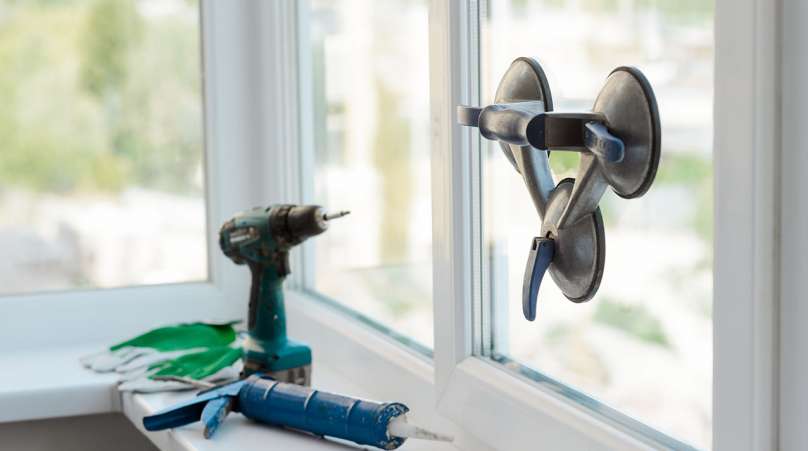
Vinyl Window Installation
If you’re thinking of installing vinyl replacement windows yourself, you should first examine the status of your current window frames. If they happen to be deteriorating badly, or if they’re obviously not square, it’s likely that the entire window unit plus the frame, might need to be replaced. This is a much bigger job than the average do-it-yourselfer is capable of, and should be left to the professionals who have experience in a task this big.
When it’s necessary for a full-frame replacement, you will be replacing the entire window, right down to the frame of the house itself. The reason this is a much more advanced project is that both the interior and exterior trims must be removed, and it’s often necessary to remove the siding of your house as well, at least to some extent.
This will call for some siding replacement after your window has been installed, and that is likely to be a skill which you probably don’t have. However, assuming that the condition of your existing window frames is acceptable, you should be able to proceed with installing vinyl replacement windows with some basic tools and do-it-yourself skills.
Measure the width and height
It’s very important to determine the interior width and height of your window frames, both from top to sill and from side to side. In fact, you should double check these measurements so that you’re absolutely sure of their accuracy, and you don’t purchase a window which won’t fit your frame. Use a standard tape measure to size your current windows, and make sure to measure inside your current frame, as opposed to measuring between the stops which hold your sashes in place.
Make sure to measure the window height at the right, left, and middle of the window, and measure width at the bottom, top, and middle of the window. If you’ve come up with different measurements for these areas, always use the smallest height and width when you’re ordering your windows from a home center.
Fortunately, most all frame dimensions will be able to accommodate a standard-size vinyl window. Now that you have your precise measurements, you can order your windows from your local home center. Naturally, the price you pay will depend on your window manufacturer, as well as any special features you request. You should strongly consider ordering windows with either double-pane or triple-pane glass, for the sake of energy efficiency and interior insulation. Now you’re ready to move on to the next step.
Replace the original vinyl window
When you purchase your vinyl replacement windows, they will generally come mounted in a new jamb, being tilted into the old frame, and held in place there. The first thing you’ll need to do is remove and save the stop on the inside, because it will be used again later. Next you need to remove the bottom window sash and pull out the parting stop. This stop will not be reused later, so you don’t have to worry about breaking it.
Then you can remove the upper sash, as well as the sash liners and springs. The sash cord pulleys can be removed, and the weight pockets can be refilled with fiberglass insulation. Now you can emplace your new vinyl window, tight against the outside stop. Screw in the mounting screws on both sides, and caulk around the exterior. Lastly, you will need to install the vinyl trim pieces, and reinstall the original inside stop which you removed in the first step.
Close up the window sections
To complete the job, you’ll need to close up both the top and the bottom portions of your window. For the top part of the window, the inside stop molding should be more than sufficient to hold the window in place. Using vinyl trim and caulk, you can seal the gap which exists at the bottom of your new window.
If it has been installed correctly, your window should rest easily against the stool positioned on the inside. To complete your vinyl window installation, you should apply latex caulk along the sides of your interior trim. This will seal out any kind of moisture or airflow which might develop on the frame, and it will ensure that your new window is weathertight and as energy efficient as its construction allows.




